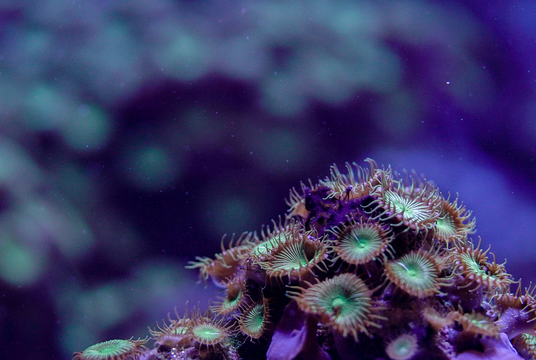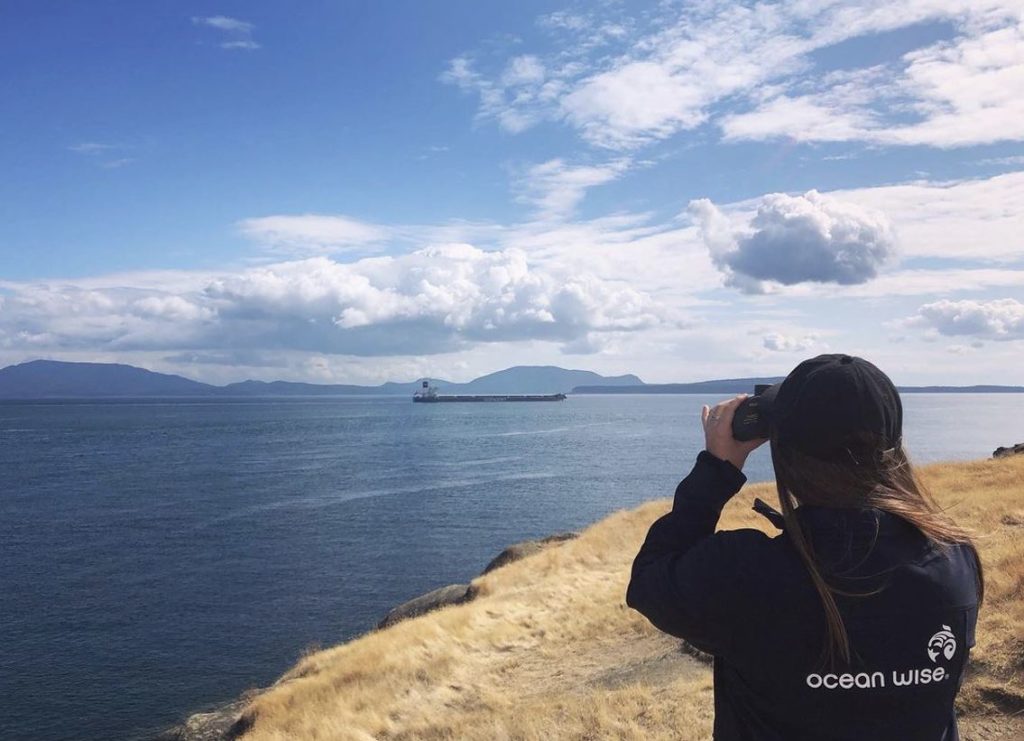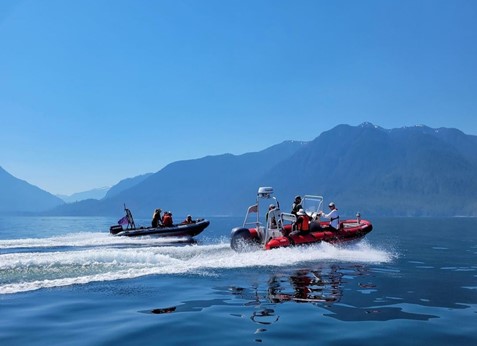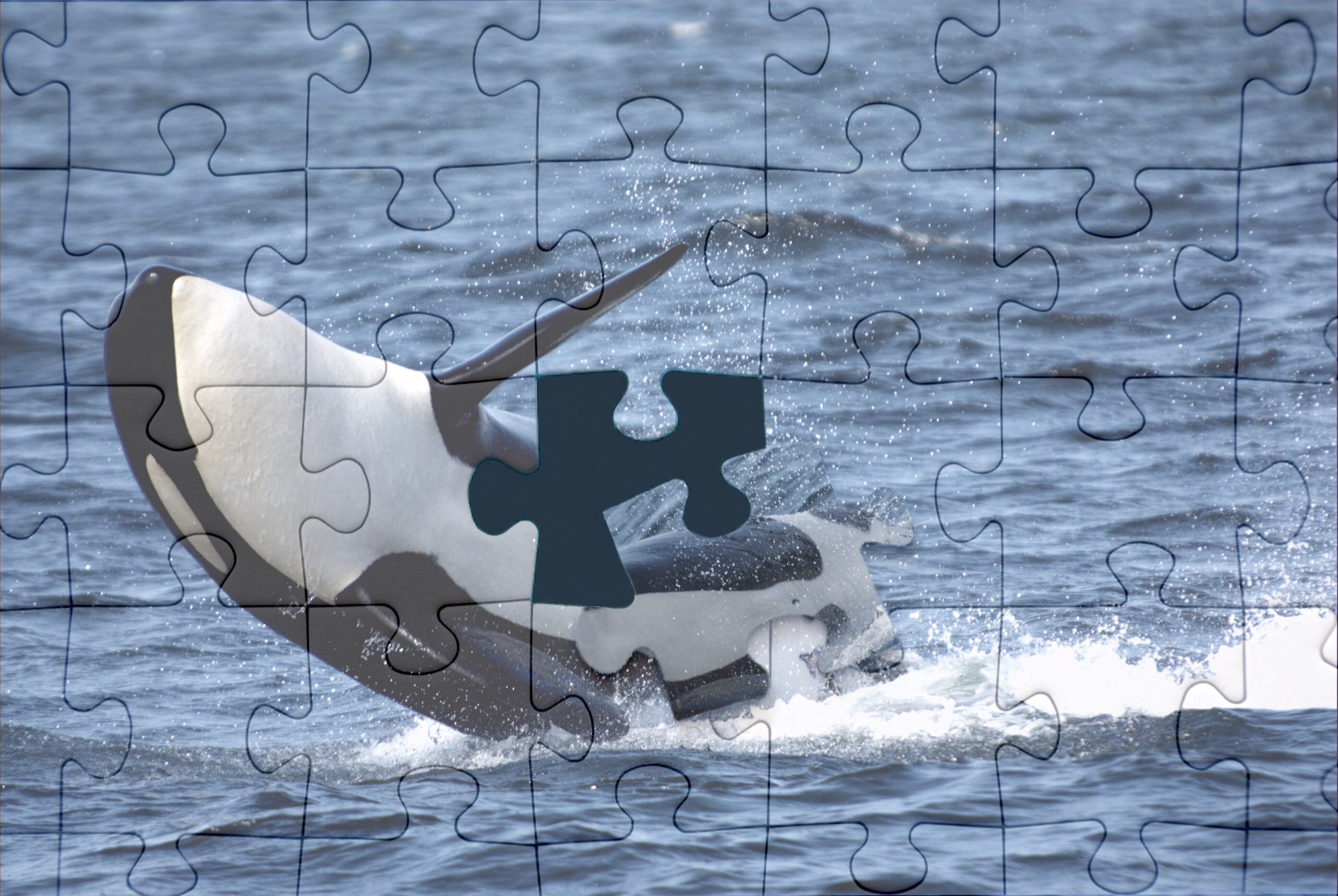
DNA: A Key piece in the puzzle of Killer Whale Conservation
By: Adam Warner
There are a lot of moving parts to the conservation of highly mobile marine predators – a big task that can be approached at many different scales at once. From identifying individual animals to aid in health assessments to determining the genetic variability of a population as a whole, DNA is a key piece of the puzzle that researchers at the Marine Mammal Research Program (MMRP)’s Conservation Genetics Lab leverages to contribute to the larger picture of killer whale conservation.
The killer whale genome is made up of over 2.2 billion nucleotide bases (the “backbone” of the DNA molecule. Each base is one of four chemical units, represented by a corresponding letter: A=Adenine, G=Guanine, T=Thymine and C=Cytosine) and can be “read” using DNA sequencing. It would take a lot of time and effort to read through the entire genome, 99.9% of which is identical in all killer whales (and many other mammals), so geneticists have developed methods to look at specific parts of the genome that tend to vary among individual animals in a population. By looking at enough of these variable parts, researchers can identify a specific whale based on its genetic “fingerprint”.
These fingerprints are being used by MMRP researchers, who are getting their hands dirty to answer the who’s who of killer whale poo. In collaboration with Fisheries and Oceans Canada (DFO), samples of killer whale feces (scat) have been collected in the field since 2018 as part of a project to assess the health of the northern and southern resident killer whale populations. While the stress hormone team analyzes these samples for hormone metabolite levels, it is important to verify which individual killer whale made the… ahem… “deposit” so that these results can be matched up with body condition analysis from our photogrammetry team. This allows the painting of as complete a picture as possible of each whale’s health. Luckily, in addition to containing stress hormone metabolites and other waste products, scat samples also contain the whale’s DNA, the natural variation of which can be used to identify the individual.
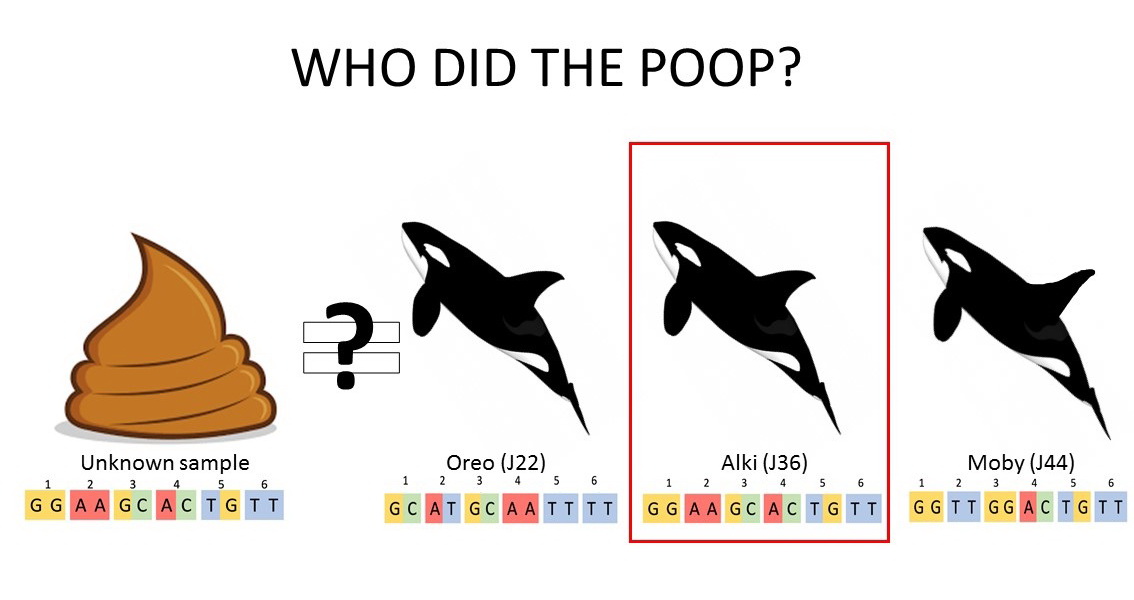
A maybe-less-smelly (but no less important!) application of genetic “fingerprints” is determining the paternity of killer whale calves. This is a relatively simple task for resident killer whales – members of these populations spend their whole lives travelling with their matrilines, so we can be sure we know the identity of a calf’s mother. The missing piece is the father’s identity as he will return to travelling with his own matriline rather than with the calf’s mother. As with humans, killer whales inherit half of their genetic information from their mothers and half from their fathers, so the father’s identity can be determined by comparing his genetic fingerprint to those of the mother and calf, and using the process of elimination to determine whether he sired the calf. Researchers at the National Oceanic and Atmospheric Administration (NOAA) recently found that over 50% of all southern resident killer whale calves born in the past 30 years have been fathered by only two males – J1 and L41!
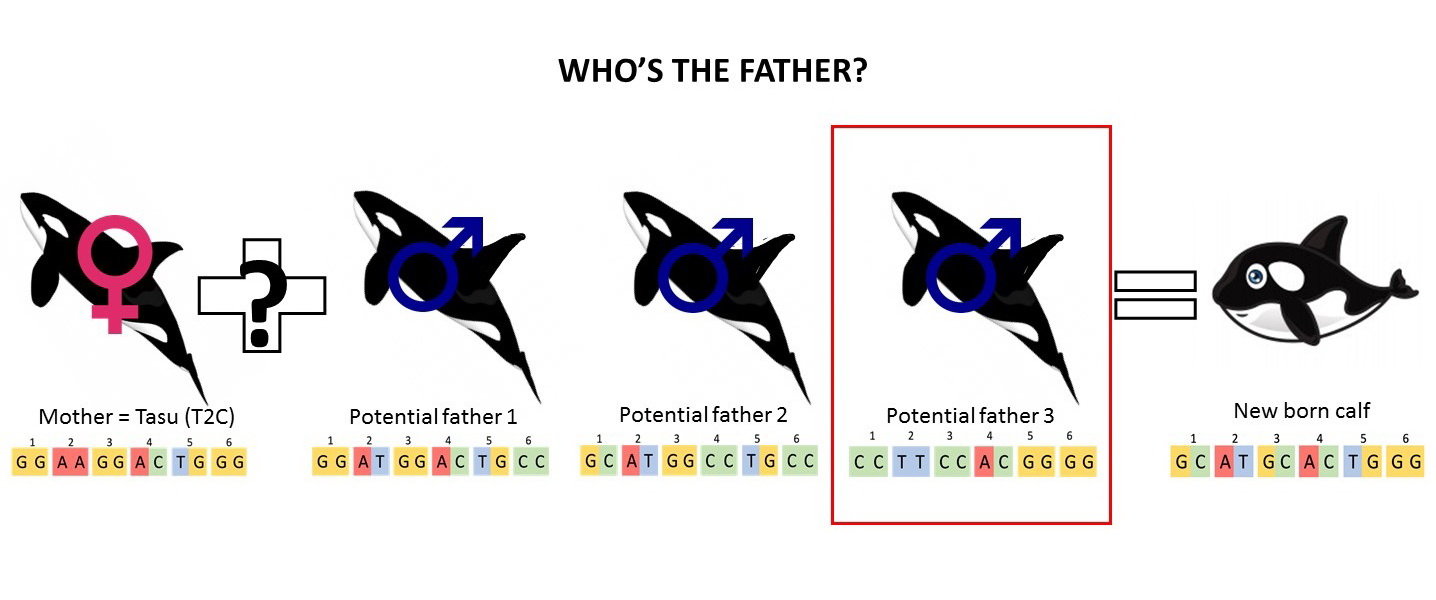
MMRP researchers are tackling an even trickier puzzle – trying to determine paternity of the much larger number of Bigg’s (transient) killer whales. Unlike the resident populations, Bigg’s killer whales do not always travel in tight-knit family groups, meaning even maternity needs to be checked for some individuals. Using biopsy samples (actively collected from whales using biopsy darts) compiled over several years of collaborative research, we are piecing together a family history for the Bigg’s population – stay tuned to learn if we discover another Genghis Khan of the killer whale world, or whether a few more males have a seat at the table in the reproductive world of Bigg’s killer whales.
Ocean Wise’s genetics work is funded in part by Fisheries and Oceans Canada’s Oceans Protection Plan, Doug Horswill, and the Wild Killer Whale Adoption Program.
If you are interested in our scientific publications, please visit the Marine Mammal Research Program’s website, https://research.ocean.org/program/marine-mammals. To learn more about how you can support our killer whale research by symbolically adopting a killer whale through our Wild Killer Whale Adoption Program, please visit www.killerwhale.org .
Posted November 9, 2019 by Ocean Wise
